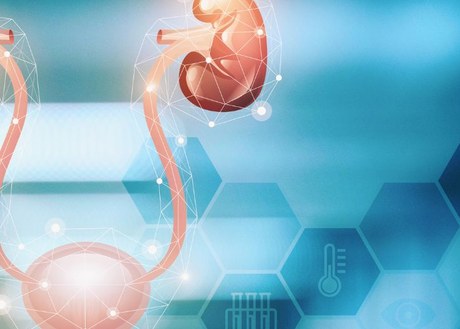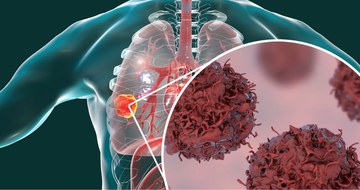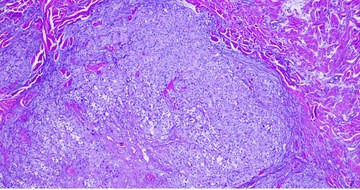FDA Approves First Gene Therapy for the Treatment of High-Risk, Non-Muscle-Invasive Bladder Cancer
What is the potential role for nadofaragene firadenovec-vncg in the treatment of high-risk BCG-unresponsive NMIBC?
- Nadofaragene firadenovec-vncg is approved for adults with high-risk, BCG-unresponsive NMIBC with CIS, with or without papillary tumors.1
- Treatment of high-risk NMIBC typically consists of surgical removal of the tumor and the use of intravesical BCG to reduce risk of recurrence or progression to higher grade or stage. Historically, there have been limited treatment options for patients who are unresponsive to BCG. Nadofaragene firadenovec-vncg joins cystectomy (preferred), intravesical chemotherapy, and pembrolizumab (for select patients) as category 2A recommended options in the National Comprehensive Cancer Network (NCCN) guidelines for initial management of BCG-unresponsive NMIBC.2
- While radical cystectomy is preferred in the BCG-unresponsive setting, it can be associated with high perioperative morbidity and may not be appropriate for many patients. Pembrolizumab carries a risk of systemic immune-related adverse effects, and previously evaluated intravesical therapies have failed to provide a robust or durable response, leaving an unmet need for effective, safe, and durable intravesical treatment.3
- Nadofaragene firadenovec-vncg is the first gene therapy approved for treatment of NMIBC.1
- Approval was based on the positive results of Study CS-003, a phase 3, multicenter, single-arm trial evaluating the safety and efficacy of nadofaragene firadenovec-vncg in BCG-unresponsive, high-risk NMIBC with or without papillary tumors, after transurethral resection. 103 adults with CIS (with or without a high-grade Ta or T1 tumor) were included in the efficacy population. Patients received 75 mL nadofaragene firadenovec-vncg (3×1011 viral particles per mL) by intravesical administration through a urinary catheter which was left to dwell in the bladder for 1 hour. Nadofaragene firadenovec-vncg was administered once every 3 months for up to 12 months.4
- The study population was largely Caucasian (93%) and male (82%), with a median age of 71 years. All patients had urothelial cell carcinoma of the bladder, there were no reported histological variants. Patients were heavily pretreated, with 50% of patients having received 3 or more previous courses of BCG.4
- Complete response by month 3 was observed in 55 (53.4%) of 103 patients in the CIS cohort. Of patients achieving complete response initially, 45.5% remained free from recurrence at 12 months. Median duration of complete response was 9.69 months.4,5
- Study CS-003 also included 48 patients with high-grade papillary Ta and T1 tumors only:
- Freedom from high-grade recurrence at 3 months was observed in 35 (72.9%) of the 48 patients in the high-grade Ta/T1 tumor only cohort, and 60% of those patients remained free from high-grade recurrence at 12 months.4
- Treatment in this population (without CIS) is not included in the FDA approval, however, was assigned an NCCN category 2B recommendation.3
- In the safety population, study drug-related adverse events of any grade were reported in 66% of patients. The most common adverse events were discharge around the catheter during instillation, fatigue, bladder spasms, and urinary urgency. Grade 3 study drug-related adverse events occurred in 4% of patients and included two reports of urinary urgency, and one each of bladder spasm, syncope, hypertension, and urinary incontinence.4
- There were no grade 4 or 5 study drug-related adverse events. Two reported serious adverse events, sepsis (grade 4) and hematuria, were considered study drug-unrelated but procedure-related.4,6
- Adverse events leading to dose interruption occurred in 54 patients. Most common causes of dose interruption were instillation site discharge, bladder spasm, and urinary urgency. Three patients discontinued the study drug due to adverse events.1,4
- Nadofaragene firadenovec-vncg is a non-replicating adenoviral vector-based gene therapy, consisting of recombinant adenovirus (rAd)-IFNα. When given by intravesical administration, the virus is transduced into the lining of the bladder and incorporated into the cellular DNA. The resulting high local expression of IFN alpha2b protein is believed to have antitumor activity.1
What role can the pharmacist play in the management of patients on nadofaragene firadenovec-vncg?
- Nadofaragene firadenovec-vncg is prescribed as 75 mL (at a concentration of 3×1011 viral particles/mL) instilled once every 3 months into the bladder via urinary catheter for up to 12 months or until disease progression or unacceptable toxicity. After instillation, the medication should remain in the bladder for 1 hour.1
- Patients without evidence of high-grade recurrence were allowed to continue on therapy beyond 12 months in Study CS-003.4
- If a patient does not have a complete response to treatment after 3 months or if carcinoma in situ recurs, consider cystectomy. Delaying cystectomy in patients with BCG-unresponsive CIS could lead to development of muscle invasive or metastatic bladder cancer.1
- There are no dose adjustments for renal and hepatic insufficiency or toxicity. No notable drug interactions exist.1,4
- Premedication with an anticholinergic is recommended before each instillation of nadofaragene firadenovec-vncg to minimize irritative voiding symptoms.1
- Dosing of anticholinergics was not standardized in Study CS-003 and was at the discretion of the treating physician, including the option to omit.4
- Nadofaragene firadenovec-vncg is contraindicated in patients with prior hypersensitivity reactions to interferon alfa or to any component of the product.1
- Pharmacy involvement in the development of safe handling procedures is vital given the nature of this agent. Detailed instructions for preparation and administration can be found in the package insert.1
Clinical Pearls
- Individuals who are immunosuppressed or immune-deficient should not prepare, administer, or come into contact with nadofaragene firadenovec-vncg. These individuals may be at risk for disseminated adenovirus infection due to the potential for low levels of replication-competent adenovirus in nadofaragene firadenovec-vncg.1
- Measurable vector DNA may be shed in the urine after treatment with nadofaragene firadenovec-vncg. For 2 days following treatment, voided urine should be disinfected for 30 minutes with an equal volume of bleach before flushing the toilet.1
- Nadofaragene firadenovec-vncg is shipped frozen at ≤ -60°C. Upon receipt, it can be stored in a freezer ≤ -60°C until the labeled expiration date or in a freezer between -25°C to -15°C up to 3 months. Once removed from the freezer, the vials may be stored for up to 24 hours at room temperature. Vials cannot be refrozen.1
References
1.Adstiladrin (nadofaragene firadenovec-vncg) [prescribing information]. Kuopio, Finland: Ferring Pharmaceuticals; December 2022.
2.National Comprehensive Cancer Network. Bladder Cancer (Version 3.2023). Available at https://www.nccn.org/professionals/physician_gls/pdf/bladder.pdf. Accessed June 20, 2023.
3.FerGene announces pivotal Phase 3 study of nadofaragene firadenovec met its primary endpoint with more than half of patients with high-grade non-muscle invasive bladder cancer (CIS ± Ta/T1) achieving a complete response at three months. Available at https://www.urotoday.com/conference-highlights/suo-2019/suo-2019-bladder-cancer/117552-fergene-announces-pivotal-phase-3-study-of-nadofaragene-firadenovec-met-its-primary-endpoint-with-more-than-half-of-patients-with-high-grade-non-muscle-invasive-bladder-cancer-cis-ta-t1-achiev. Accessed June 20, 2023.
4.Boorjian SA, Alemozaffar M, Konety BR, et al. Intravesical nadofaragene firadenovec gene therapy for BCG-unresponsive non-muscle-invasive bladder cancer: a single-arm, open-label, repeat-dose clinical trial. Lancet Oncol. 2021; 22: 107-17. https://doi.org/10.1016/S1470-2045(20)30540-4.
5.FDA D.I.S.C.O. Burst Edition: FDA approval of Adstiladrin (nadofaragene firadenovec-vncg) for patients with high-risk Bacillus Calmette-Guérin unresponsive non-muscle invasive bladder cancer with carcinoma in situ with or without papillary tumors. Available at https://www.fda.gov/drugs/resources-information-approved-drugs/fda-disco-burst-edition-fda-approval-adstiladrin-nadofaragene-firadenovec-vncg-patients-high-risk. Accessed June 20, 2023.
6.FDA Approves Nadofaragene Firadenovec-Vncg for BCG-Unresponsive NMIBC. Available at www.targetedonc.com/view/fda-approves-nadofaragene-firadenovec-vncg-for-bcg-unresponsive-nmibc. Accessed June 20, 2023.



